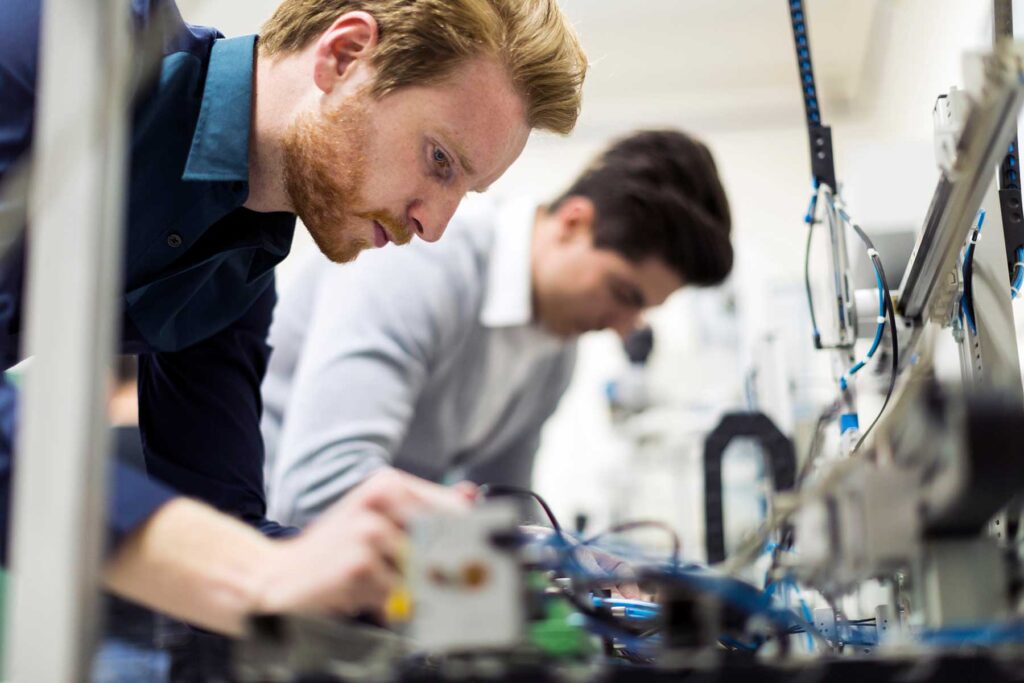
It takes courage and capability to invent tomorrow, and pioneers in the Maryland National Capital Region are doing it, one audacious idea at a time. Higher education, federal and private industry partners within our region are putting their heads and resources together to create technology solutions that are sustainable and smart. This month’s blog highlights some of the breakthroughs energizing our region.
Home to a rich agricultural legacy and a tradition of ingenuity, Frederick County is fertile ground for innovation. Quantum Loophole’s 2,100 acre data center in development is poised to transform Maryland’s technology landscape on a gigawatt scale. A data center “city” with clean power at the heart of its development, Quantum Loophole’s campus will incorporate sustainability, connectivity and historic preservation. The multi-year phased project is set to bring significant investments to Frederick County with thousands of construction related jobs and investment and fuel continued growth within the tech sector.
The Johns Hopkins University Applied Physics Lab (APL) in Howard County, the largest university-affiliated research center in the U.S., is shaping the second wave of the quantum revolution. Whether their teams are testing high-precision sensing technologies or tackling computing problems once deemed unsolvable, APL is inventing tomorrow, one discovery at a time. Their affiliation with the Maryland Quantum Alliance, a regional consortium of universities, Fortune 500s, startups and federal labs expanding the quantum ecosystem, will keep the change coming.
A passion for human-centered design motivates the research and development teams at AnthroTronix in Montgomery County. Their advancements in wearable technology, augmented technology and robotics are forging new frontiers in digital health, simulation and training. The company’s DANA technology is an FDA-cleared clinical assessment tool that uses a smartphone to monitor changes in a person’s cognitive function. Used by Johns Hopkins University and the U.S. military, DANA helps medical professionals track cognitive function for conditions such as depression, Alzheimer’s Disease and Post-Traumatic Stress Disorder.
Meanwhile in Anne Arundel County, the hypersonic arms race has reached Glen Burnie. Defense contractor Kratos Defense & Security Solutions will use its facility to work with the U.S. Navy to develop a hypersonic test vehicle capable of moving faster than five times the speed of sound. The contract with the Navy Surface Warfare Center Port Hueneme Division in California will create an estimated 20 to 25 jobs, most of which will be in science, technology, engineering and math fields. Booz Allen Hamilton also made headlines when they announced the opening of a new 5G lab in Annapolis Junction, in support of mission-critical client work further enabled by 5G integration and deployment. The lab’s secure test environment features a leading-edge 5G Standalone (SA) carrier-grade network, including a SA mobile core, Radio Access Network (RAN) and mobile edge computing enabling multiband testing across devices and enhanced research and development capabilities.
The Quantum Capital in College Park earns its distinction as the seat of invention. Home to the University of Maryland’s quantum hub, the $2 billion Discovery District in Prince George’s County is a hive of research and development. Housing over 200 quantum scientists, over 60 private firms, startups and educational partners, the Discovery District is home to beautiful minds and disruptive technologies.
In Charles County, the U.S. Bomb Technicians Association (USBTA), industry partners and Naval Surface Warfare Center Indian Head Division(NSWC IHD) are making mission-critical discoveries at the USBTA Technology and Training Center. This extraordinary, new facility in the Town of Indian Head provides a venue for training, ideation and testing of bomb disposal technologies and innovations for local, state and federal law enforcement agencies; first responders; and military warfighters across all services.
Evaluated together, the Maryland National Capital Region’s locale, creative culture and intellectual capital are greater than the sum of our parts. Collaborative interaction in the classrooms, labs and in economic development initiatives is undoubtedly the way forward.